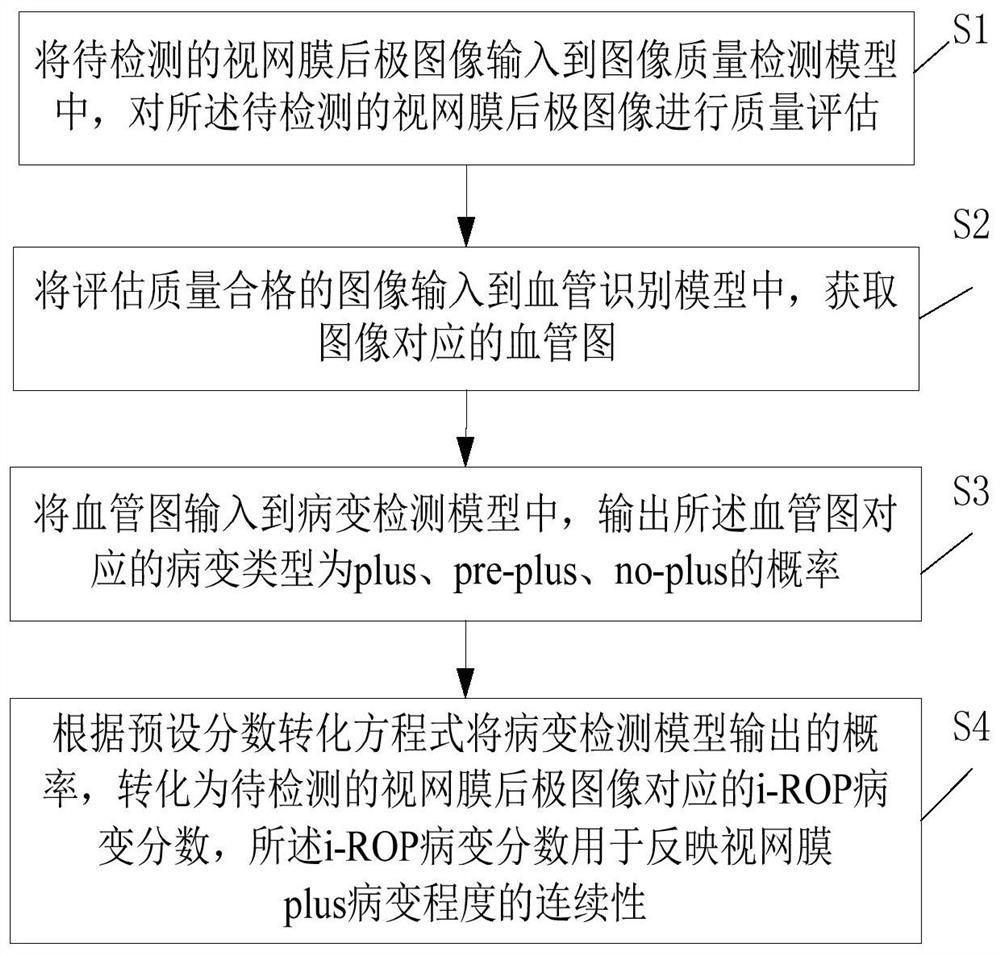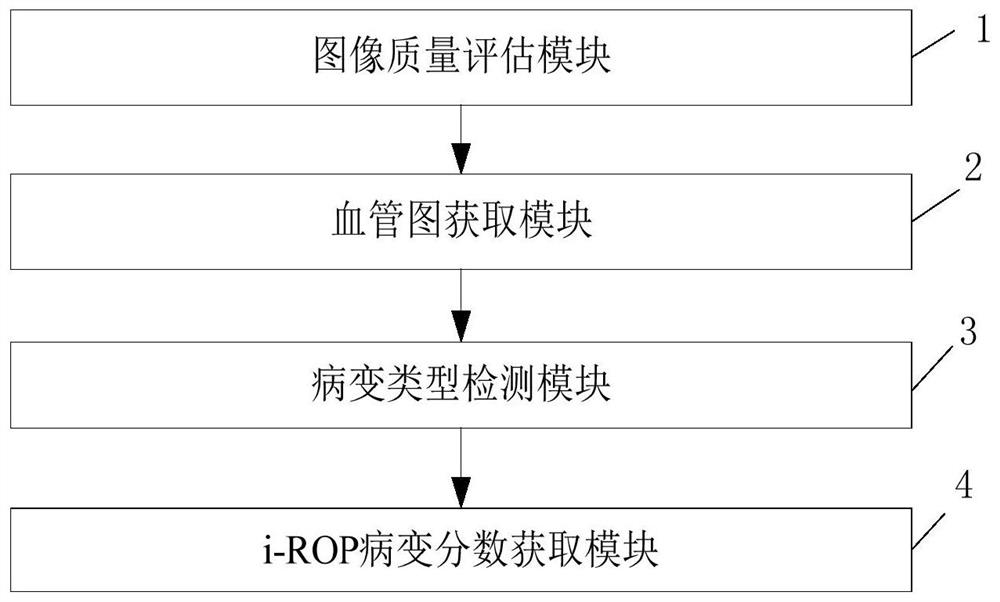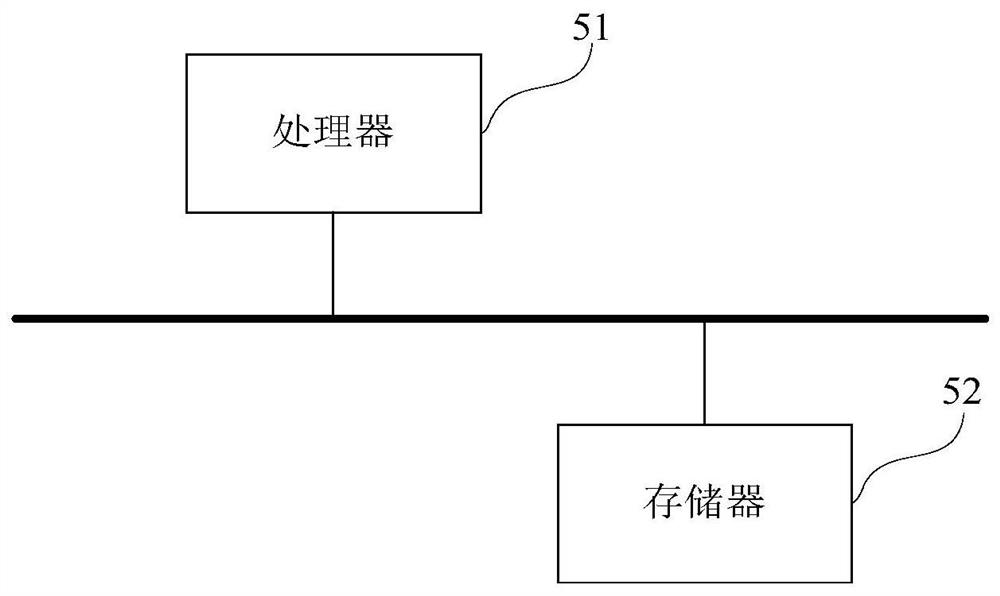Premature infant retina plus lesion detection method and system
A premature infant retina and detection method technology, applied in the detection field of premature infant retinal plus lesions, can solve the problems of inability to compare and measure the retinal state, and achieve the effect of preventing disease delay
- Summary
- Abstract
- Description
- Claims
- Application Information
AI Technical Summary
Problems solved by technology
Method used
Image
Examples
Embodiment 1
[0037] Embodiments of the present invention provide a method for detecting retinal plus lesions in premature infants, such as figure 1 As shown, the method includes the following steps:
[0038] Step S1: Input the image of the retinal posterior pole to be detected into the image quality detection model, and evaluate the quality of the image of the retinal posterior pole to be detected.
[0039] In the embodiment of the present invention, it is evaluated whether the retinal posterior pole image to be detected satisfies the standards of retinal image, retinal posterior pole image and high-quality image at the same time. In order to make a correct diagnosis of the severity of ROP, if the quality of the image is not up to standard, the image will not undergo the subsequent inspection process, and the quality assurance of the image can be realized by evaluating the quality of the image. In a specific embodiment, the image quality detection model is a neural network model trained f...
Embodiment 2
[0054] Embodiments of the present invention provide a detection system for retinal plus lesions in premature infants, such as figure 2 shown, including:
[0055] Image quality evaluation module 1, for inputting the retinal posterior pole image to be detected into the image quality detection model, and performing quality assessment on the retinal posterior pole image to be detected; this module executes the description of step S1 in embodiment 1 method, which will not be repeated here.
[0056] The blood vessel map acquisition module 2 is used to input the image with qualified evaluation quality into the blood vessel recognition model, and obtain the blood vessel map corresponding to the image; this module executes the method described in step S2 in Embodiment 1, which will not be repeated here.
[0057] The lesion type detection module 3 is used to input the blood vessel map into the lesion detection model, and output the probability that the lesion type corresponding to the...
Embodiment 3
[0061] An embodiment of the present invention provides a computer device, such as image 3 As shown, the device may include a processor 51 and a memory 52, wherein the processor 51 and the memory 52 may be connected via a bus or in other ways, image 3 Take connection via bus as an example.
[0062] The processor 51 can be a central processing unit (Central Processing Unit, CPU), and can also be other general processors, digital signal processors (Digital Signal Processor, DSP), application specific integrated circuits (Application Specific Integrated Circuit, ASIC), on-site Programmable gate array (Field-Programmable Gate Array, FPGA) or other programmable logic devices, discrete gate or transistor logic devices, discrete hardware components and other chips, or a combination of the above-mentioned types of chips.
PUM
 Login to View More
Login to View More Abstract
Description
Claims
Application Information
 Login to View More
Login to View More - R&D
- Intellectual Property
- Life Sciences
- Materials
- Tech Scout
- Unparalleled Data Quality
- Higher Quality Content
- 60% Fewer Hallucinations
Browse by: Latest US Patents, China's latest patents, Technical Efficacy Thesaurus, Application Domain, Technology Topic, Popular Technical Reports.
© 2025 PatSnap. All rights reserved.Legal|Privacy policy|Modern Slavery Act Transparency Statement|Sitemap|About US| Contact US: help@patsnap.com



